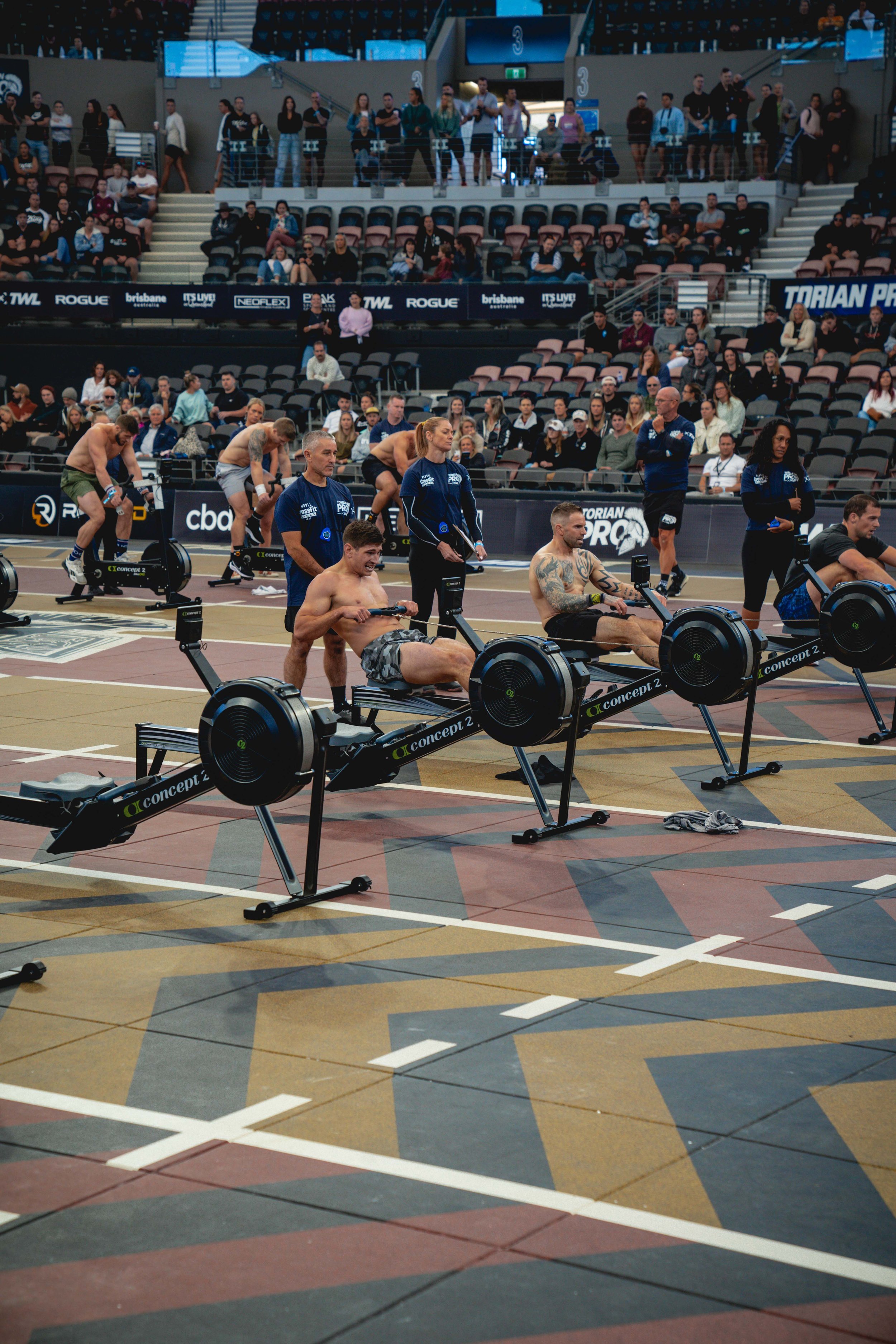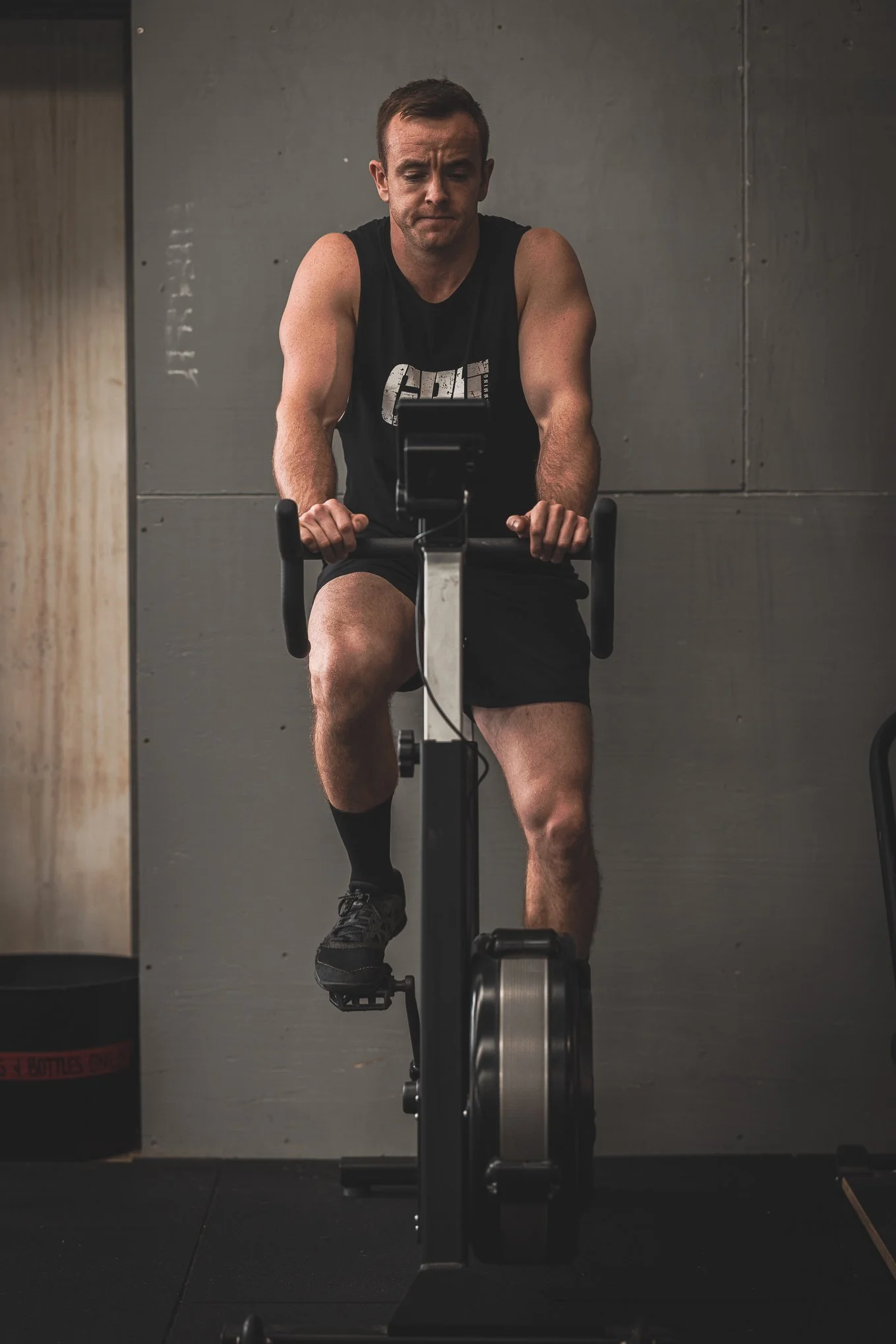Zone 2 Training
For most CrossFitters, they are under the impression that in order to get fitter – “I must train faster and harder! Every session!”
We know now that this is not the case - you need to train smarter!
Although there is times when we are required to go ‘balls to the wall’, we need to understand that doing so on a regular basis will likely result in spending more time each year nursing injuries and the impacts of adrenal fatigue.
So how do we get fitter whilst going slower?
By using a protocol known as Zone 2 Training, AKA Aerobic Threshold Training.
Zone 2 Training
This method is particularly used by endurance athletes to increase our aerobic engine, especially beneficial for those interested in competing at a high level CrossFit. It achieves this by increasing our output, whilst our heart rate remains the same.
Benefits of zone 2 training:
Higher cardiac output and lower resting heart rate!
Increased VO2 max.
Increases the ability to sustain a higher percentage of your aerobic capacity.
Help to bring your body into a more parasympathetic state which in turn decreases your sympathetic drive and allows you to rest and recover more effectively.
Increased endurance performance.
Assists in the removal of waste from your muscles at higher outputs.
How to calculate your Zone 2?
At GRIT, we use the Dr. Phil Maffetone MAF 180 formula:
180bpm – ‘Your Age’ = Target HR Zone/bpm
Once you have subtracted your age from 180, Dr Maffetone suggests making modifications from on of the categories below:
If you have or are recovering from a major illness (heart disease, any operation or hospital stay, etc.), are in rehabilitation, are on any regular medication, or are in Stage 3 (chronic) overtraining (burnout), subtract an additional 10.
If you are injured, have regressed or not improved in training or competition, get more than two colds, flu or other infections per year, have seasonal allergies or asthma, have signs of overtraining, or if you have been inconsistent, just starting, or just getting back into training, subtract an additional 5.
If you have been training consistently (at least four times weekly) for up to two years without any of the problems mentioned, no modification is necessary (use 180 minus age as your MAF HR).
If you have been training for more than two years without any of the problems listed above, have made progress in your training, improved competitively and are without injury, add 5.
Exemptions:
The MAF 180 Formula may need to be further individualized for athletes over the age of 65. For some, up to 10 beats may have to be added . This does not mean 10 should automatically be added, but that an honest self-assessment be made.
For athletes 16 years of age and under, the formula is not applicable; rather, an MAF HR of 165 has been used.
Zone 2 Test
To do so, I want you to select one of the following… (preferably your weakest)
Run 5km (Checkpoints Every 1km)
Row 6,000/4,800m (Checkpoints Every 2/1.6k)
Ski 6,000/4,800m (Checkpoints Every 2/1.6k)
Concept 2 Bike Erg (Checkpoints Every 4/3.2k)
Be disciplined and do not exceed your prescribed HR!!
Zone 2 Warm-Up Routine
You MUST follow the warm-up routine!
We need to gradually increase our HR to your target zone which takes roughly 15 minutes. Trying to rush this process will only result in your HR skyrocketing erratically all over for the beginning of the workout. Follow this routine below..
Warm-Up
0 - 5 Minutes @ ____HR (160 - Age)
5 - 10 Minutes @ ____HR (170 - Age)
10 - 15 Minutes @ Gradually Build to (180 - Age)
3 Minute Rest - Hydrate/Mobilize/etc..
Especially do this before testing!
Example Session..
The majority of sessions will range from 60 – 90 minutes+ and this will be performed @ 60%-70% of your max heart rate.
There may be some factors that make it difficult to hold a steady pace like humidity, hydration, energy levels, etc.. but these factors will always be at play in competition anyways. So get used to it!
A full session may look something like this..
Warm-Up
0 - 5 Minutes @ ____HR (160 - Age)
5 - 10 Minutes @ ____HR (170 - Age)
10 - 15 Minutes @ Gradually Build to (180 - Age)
3 Minute Rest - Hydrate/Mobilize/
Main Set
45 Minutes @ ____HR (180 - Age)
Cool Down
15 Minutes @ Slow Pace - No HR Prescription
We tested this on two of our top athletes over a five week cycle on two different monostructual movements – Bike Erg and Running.
Both athletes improved their work output without any changes to their heart rate!
The table below shows the data we collected from one athlete across the 6 weeks.
Note the (2123m) improvement over 45 minutes from week 1 to week 5, whilst average heart rate remained the same until week 6.
The athlete reported on weeks 4 and 6 that they were generally fatigued and as a result moved slower, this was supported by their average Pace and HR on those weeks.
Athlete A - Zone 2 Bike Erg
Re-Test
After 5 weeks, retest the Maffetone test. If you noticed big time improvements, work off 185 or 190 - age for the following 5 weeks.
Take note of the following metrics at the conclusion of each session:
- Run: Distance (M), Average Pace (per/km), Average HR, Average Cadence (SPM)
- Row: Distance (M) Average Pace (per/500m), Average HR, Average Cadence (SPM)
- Ski: Distance (M) Average Pace (per/500m), Average HR, Average Cadence (SPM)
- Concept 2 Bike Erg: Distance (M) Average Pace (per/1000m), Average HR, Average Cadence (RPM)
If you have any questions, shoot us an email or comment below…
Let us know how you go!
Liam Mulligan






